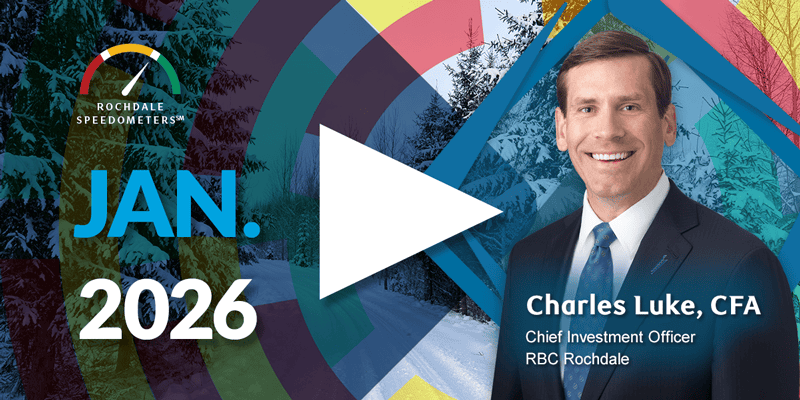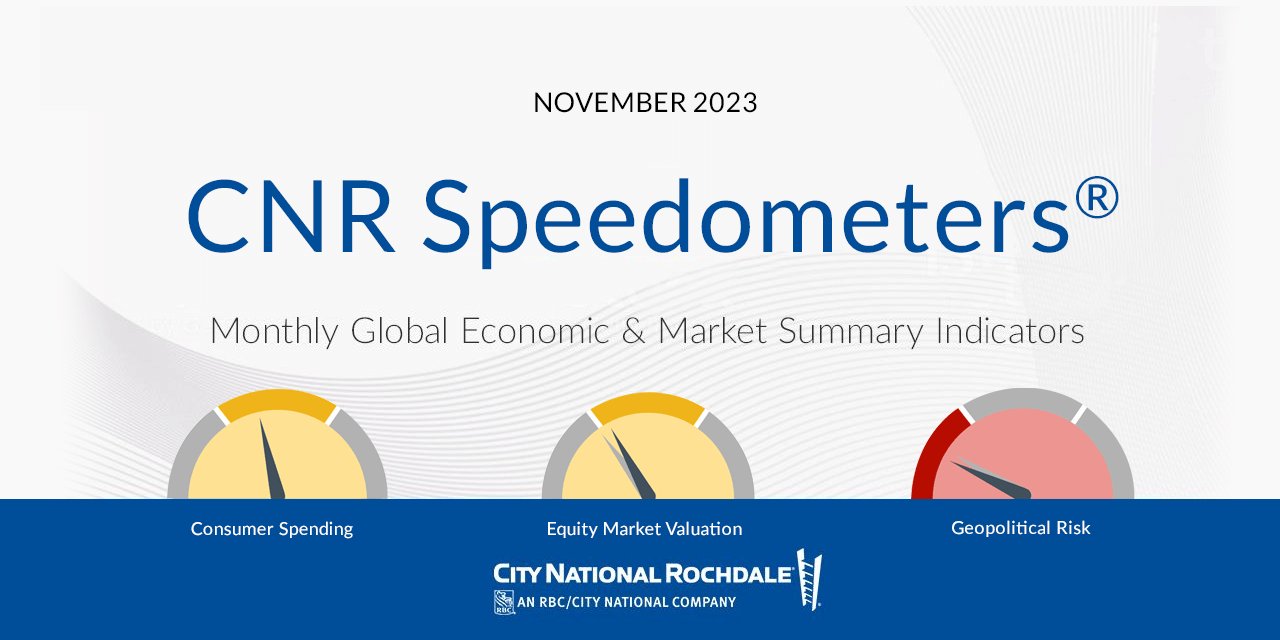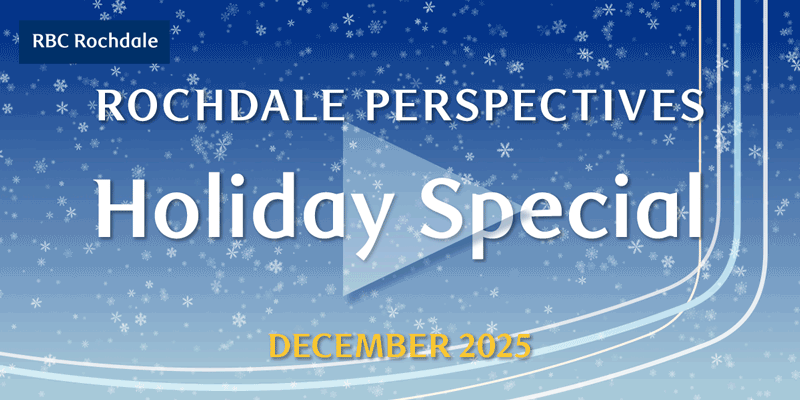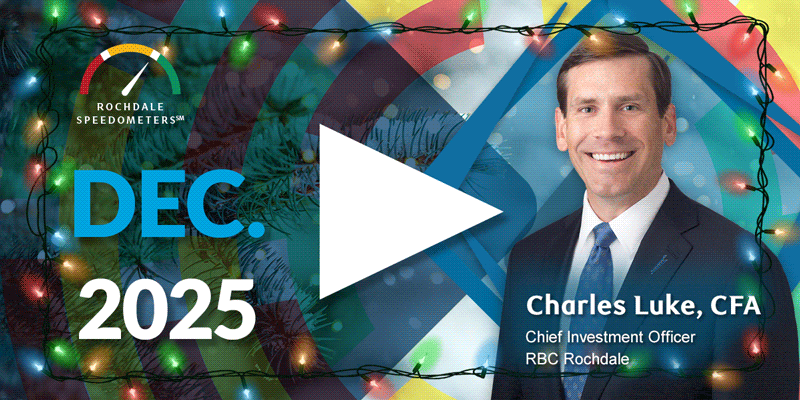
CNR Speedometers®
November 2023
Forward-Looking Six to Nine Months
TRANSCRIPT
The key takeaway from this month is that recent economic events, and comments from the Fed, support our shifting to the right of a mild recession and a higher-for-longer investment thesis.
Recent Developments 0:29 — Before diving into the two changes we're making to our Speedometers®, I'd like to briefly touch on two recent developments: Firstly, as we saw with the recent GDP report, The U.S. economic activity in Q3 was very strong. As expected, spending by consumers accelerated. There was also an unexpected increase in government spending and in inventories, which may not be sustainable going forward.
Also behind the strong consumer spending data was a substantial decline in the savings rate to 3.4% as compared to 6.2% over the preceding five years. Additionally, real incomes actually declined in the third quarter. So, as we look forward, we think consumer spending will hold up through the end of the year, but it's likely to set the stage for a slowdown in the first part of 2024.
Additionally, we continue to think higher borrowing costs and tighter financial conditions are likely to also show a more noticeable impact on consumption as well as business investment. So, net-net, there are no changes to our Consumer Spending or Loan Demand Speedometer®.
Secondly, there are no changes in our Monetary Policy dial. This week, the FOMC decided to keep the Fed funds rate at current levels, supporting CNR's view. Chairman Powell's comments in his press conference indicated that, while the downward glide path on inflation continues, tighter financial conditions, if sustained, will impact the economy.
The Fed's not certain that they've raised rates enough to return to the 2% inflation target, given the continued strength we're seeing in labor markets.
Although the strength of the economy has opened the door for additional rate hikes, Chairman Powell was clear that the Fed will be quite patient before raising rates again, and will give cumulative rate hikes more time to feed through the economy.
Bottom line: Fed actions and comments support our higher-for-longer thesis, and our Fed funds forecast.
Dial 1: 2:38 — Let's dive into the changes we are making to our Speedometers®. Firstly, on the negative side, we down-ticked our Geopolitical Risk dial, which had already been firmly in the negative territory because of the recent eruption of violence in the Middle East, which highlights the potential risk posted by the global economy and financial markets.
Now, while we don't expect that the Israeli-Hamas conflict, at this point, will develop into a wider regional conflict, or deeper U.S. involvement, risks are rising, and we remain watchful.
More broadly, though, events over the past six to nine months continue to support our view that there is a global realignment occurring between the U.S. and China-centered countries, and unless there is an unlikely breakthrough in the summit between presidents Biden and Xi, this re-alignment shows no sign of reversing. So the Geopolitical Dial continues to be red, and continues to be the thing that keeps me up at night.
Dial 2: 3:41 — On the positive side, we moved our Equity Valuation dial from red to neutral. The recent pullback in stock prices has helped take some of the riches out of the equity markets. For example, the S&P 500 PE ratio is now down to 17, from 20 in July. Meanwhile, the S&P equal weighted index is now only trading at 14 times, so, from an investment perspective, this correction is allowing us to selectively start looking over the mild recessionary valley ahead and modestly increasing exposure to high-quality stocks here in the U.S.
Key Takeaways: 4:19 — The key takeaway from this month's video is that recent economic events and comments from the Fed support our expectations of a mild recession in early ‘24 and a higher-for-longer investment thesis.



